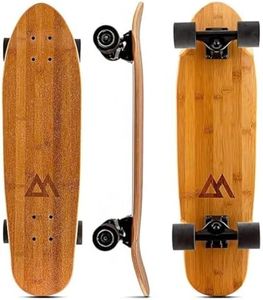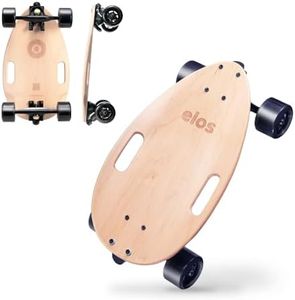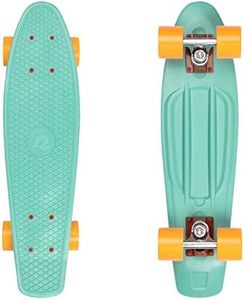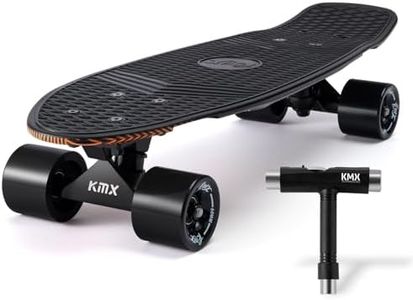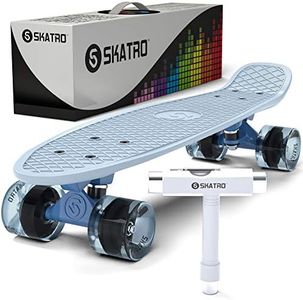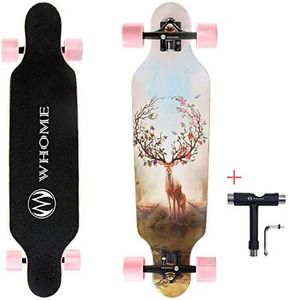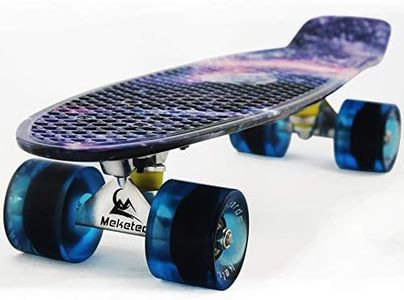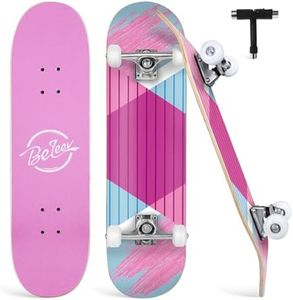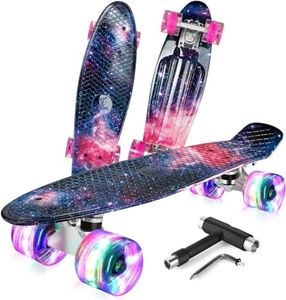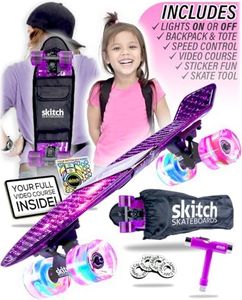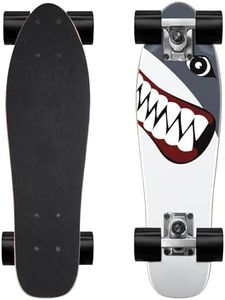We Use CookiesWe use cookies to enhance the security, performance,
functionality and for analytical and promotional activities. By continuing to browse this site you
are agreeing to our privacy policy
10 Best Cruiser Skateboards
From leading brands and best sellers available on the web.Buying Guide for the Best Cruiser Skateboards
When choosing a cruiser skateboard, it's important to focus on how and where you plan to ride. Cruisers are designed for comfortable and smooth rides, particularly in urban environments or for commuting short to medium distances. Unlike traditional skateboards or longboards, cruisers bridge the gap with their portability, shape, and ride quality. Your needs—like daily commuting, casual rides around town, or just learning—should lead your decision-making. By understanding and weighing key specs, you’ll find a cruiser skateboard that best matches your lifestyle and riding intentions.Deck Size and ShapeThe deck is the board you stand on. Cruiser decks usually range from 28 to 34 inches long and have widths of 7 to 10 inches. A shorter, narrower deck is lighter, more portable, and easier to turn, making it great for crowded sidewalks and easy storage. Longer and wider decks feel more stable and comfortable for longer rides or for people with bigger feet. Think about how much space you want to stand on, and whether you’d prefer more control or more comfort on your cruiser.
Deck MaterialMost cruiser decks are made from maple wood, bamboo, or plastic. Maple is strong and provides a classic skateboard feel, while bamboo is flexible and lightweight, making for a smoother ride. Plastic decks are lightweight, weather-resistant, and comes in many colors, but they can feel less sturdy. Choose a material that matches your preference for ride feel and durability, keeping in mind that wood tends to absorb bumps better but needs more care in wet conditions.
Wheel Size and HardnessCruiser skateboard wheels are typically larger (between 55mm and 70mm) and softer (with a durometer rating between 78A and 86A) compared to standard skateboard wheels. Bigger and softer wheels roll faster and smoother over cracks and rough streets, making your ride more comfortable. Smaller or harder wheels are less forgiving but allow for more tricks and sharper turns. Your choice should depend on where you mostly ride—rough streets need bigger, softer wheels, while smoother pavement and technical riding can handle smaller or harder wheels.
TrucksTrucks are the metal T-shaped parts that attach the wheels to the deck and allow your cruiser to turn. Wider trucks offer more stability, great for beginners or fast cruising, while narrower trucks make turning and carving sharper. Trucks can also be set loose (for quicker turns and carving) or tight (for more stability). When picking trucks, match their width to your deck and consider whether you want a more agile or a more stable ride.
KicktailA kicktail refers to the upward bend at the back (or sometimes front) of the deck. Kicktails let you pop up the board for tricks, curbs, or quick turns. Not all cruisers have them—some are flat for a smoother look and a more stable platform. If you plan to hop curbs or want some trick potential, a kicktail is useful. But if you care mainly about comfort and cruising straight, a flat deck can feel more relaxed.
PortabilityPortability is about how easy the cruiser is to carry and store. Shorter, lighter boards are easy to take on buses or stash under a desk, ideal if your journey includes walking or public transport. Heavier or longer cruisers are less convenient but may offer more ride comfort. To choose, consider how much carrying or storage you’ll have to do before and after riding.
